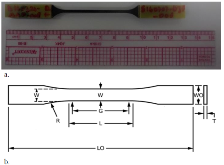High Strain Rate Mechanical Characterization of Carbon Fiber Reinforced Polymer Composites Using Digital Image Correlations
- National Inst. of Standards and Technology (NIST), Gaithersburg, MD (United States)
- Ford Motor Company, Dearborn, MI (United States)
We present that the introduction of carbon fiber reinforced polymer (CFRP) composites to structural components in lightweight automotive structures necessitates an assessment to evaluate that their crashworthiness dynamic response provides similar or higher levels of safety compared to conventional metallic structures. In order to develop, integrate and implement predictive computational models for CFRP composites that link the materials design, molding process and final performance requirements to enable optimal design and manufacturing vehicle systems for this study, the dynamic mechanical response of unidirectional (UD) and 2x2 twill weave CRFP composites was characterized at deformation rates applicable to crashworthiness performance. Non-standardized specimen geometries were tested on a standard uniaxial frame and an intermediate-to-high speed dynamic testing frame, equipped with high speed cameras for 3D digital image correlation (DIC). Specimen cross-sections, according to each fiber orientation tested, were consistent across strain rates to ensure results were comparable. Tensile strength and modulus were experimentally investigated over a wide range of strain rates (0.0001 to 200 s-1). DIC was used to estimate strain profiles on composites surfaces, and the modulus was calculated from those strain measurements. Experimental results demonstrated an increase in the tensile strength of UD CFRP composites in the longitudinal (0°) and transverse (90°) direction with increasing strain rates. In contrast, the tensile strength of 2x2 woven composites and the tensile modulus of the UD material were insensitive to increasing strain rates. Finally, comparison of failure modes provided insights on how loading rates influenced failure mechanisms.
- Research Organization:
- Ford Motor Company, Detroit, MI (United States)
- Sponsoring Organization:
- USDOE Office of Energy Efficiency and Renewable Energy (EERE), Vehicle Technologies Office (EE-3V)
- Grant/Contract Number:
- EE0006867
- OSTI ID:
- 1504726
- Alternate ID(s):
- OSTI ID: 1431022
- Journal Information:
- SAE International Journal of Materials and Manufacturing (Online), Vol. 10, Issue 2; ISSN 1946-3987
- Publisher:
- SAE InternationalCopyright Statement
- Country of Publication:
- United States
- Language:
- English
Similar Records
Effects of fabric architectures on mechanical and damage behaviors in carbon/epoxy woven composites under multiaxial stress states
10° off-axis testing of CFRP using DIC: A study on strength, strain and modulus























